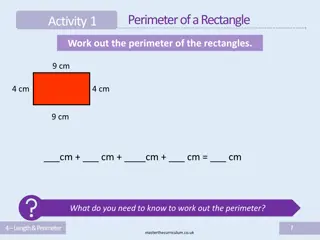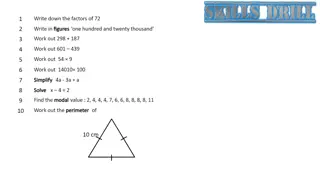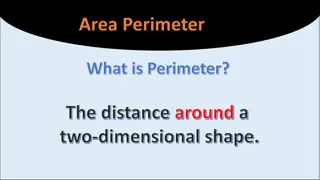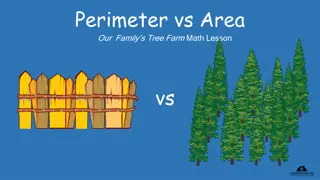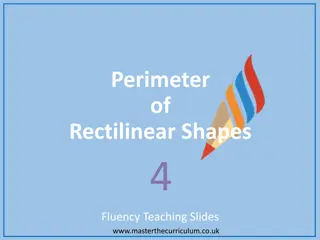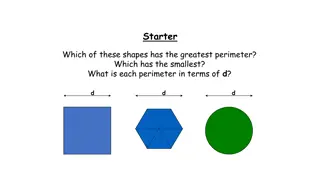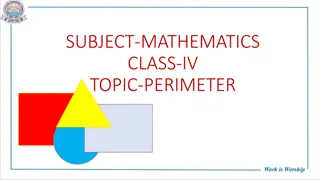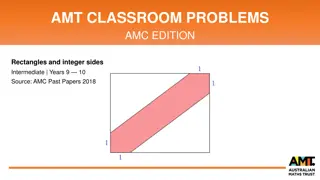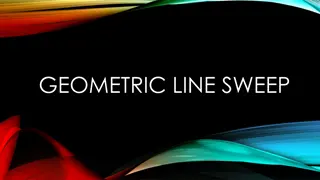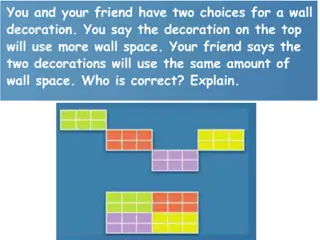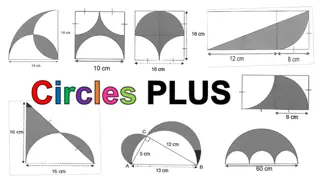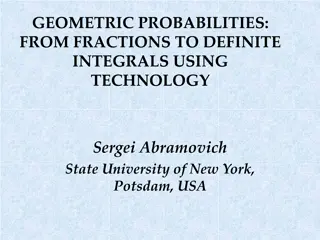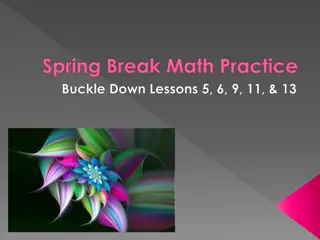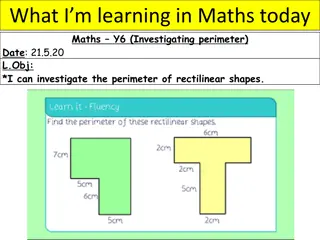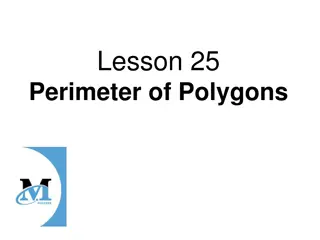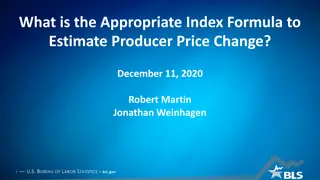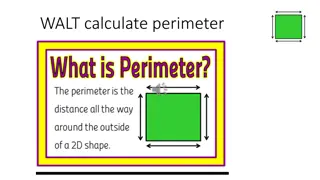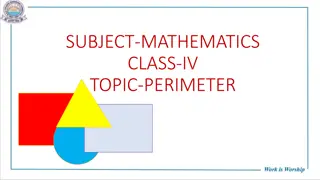Understanding Perimeter and Area of Geometric Figures
Explore the concepts of perimeter and area in geometric figures including squares, triangles, rectangles, parallelograms, and trapeziums. Learn how to calculate the perimeter and area of these shapes through simple formulas and examples provided in an informative presentation. Visual aids will aid in enhancing comprehension.
Download Presentation

Please find below an Image/Link to download the presentation.
The content on the website is provided AS IS for your information and personal use only. It may not be sold, licensed, or shared on other websites without obtaining consent from the author. Download presentation by click this link. If you encounter any issues during the download, it is possible that the publisher has removed the file from their server.
E N D
Presentation Transcript
Perimeter The perimeter of a closed plane figure is the length of its boundary. 8cm 10cm 7cm 8cm 15cm Perimeter = 15 + 8 + 10 + 8 + 7 = 48cm
Perimeter Square Triangles Rectangle b=4cm b c L= 8cm a L=6cm P = 8 + 5 + 8 + 5 P = 6 + 6 + 6 + 6 P = a + b + c P = l + b + l + b P = l + l + l + l = 2(l + b) = 4l or 4s
Area Area is the space within the boundary of a figure.
Area of parallelogram height base Area of parallelogram = base x height
Area of a triangle h h h b b b Area = x base x height
Area of trapezium D K A B C H Area of trapezium ABCD = area of ABC + area of ACD = ( x BC x AH) + ( x AD x CK) = x AH x (BC + AD) = x height x sum of parallel sides
This powerpoint was kindly donated to www.worldofteaching.com http://www.worldofteaching.com is home to over a thousand powerpoints submitted by teachers. This is a completely free site and requires no registration. Please visit and I hope it will help in your teaching.





